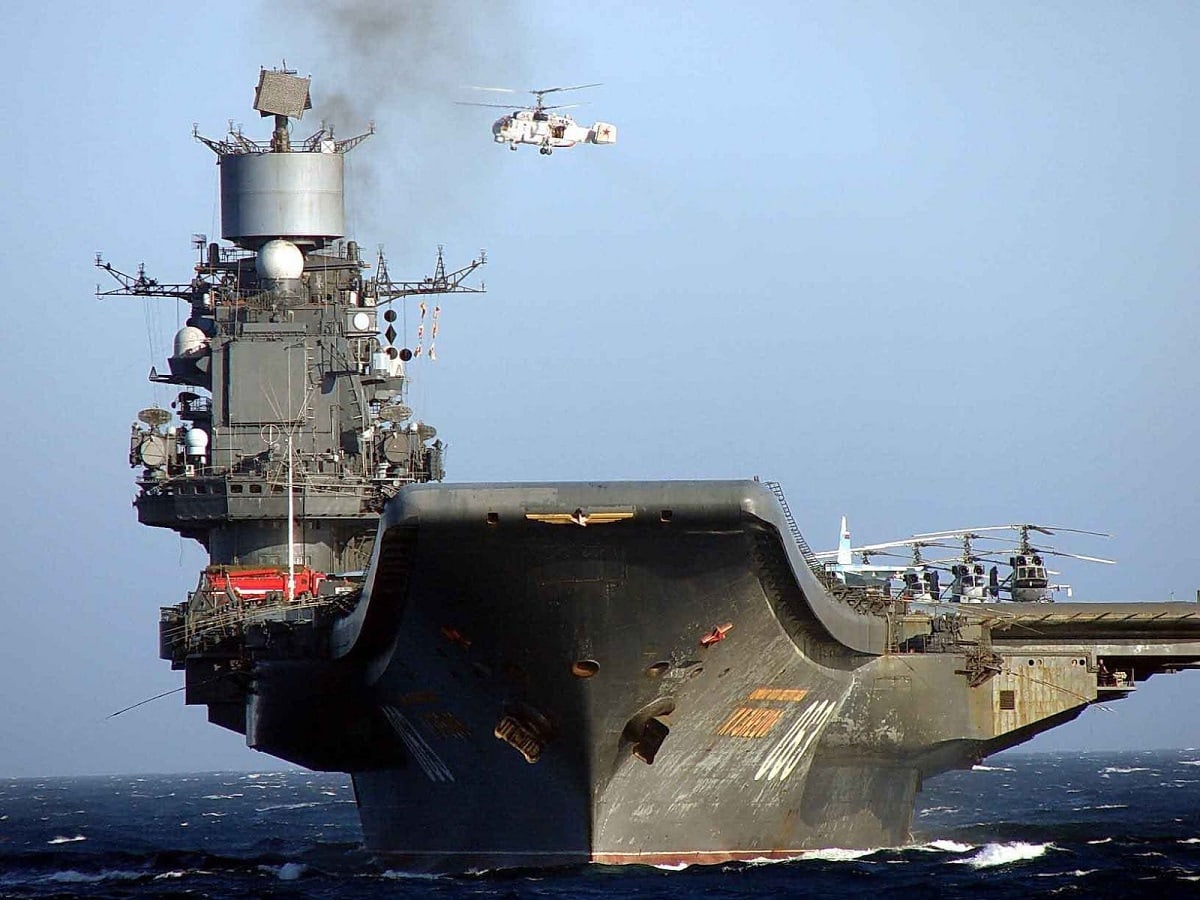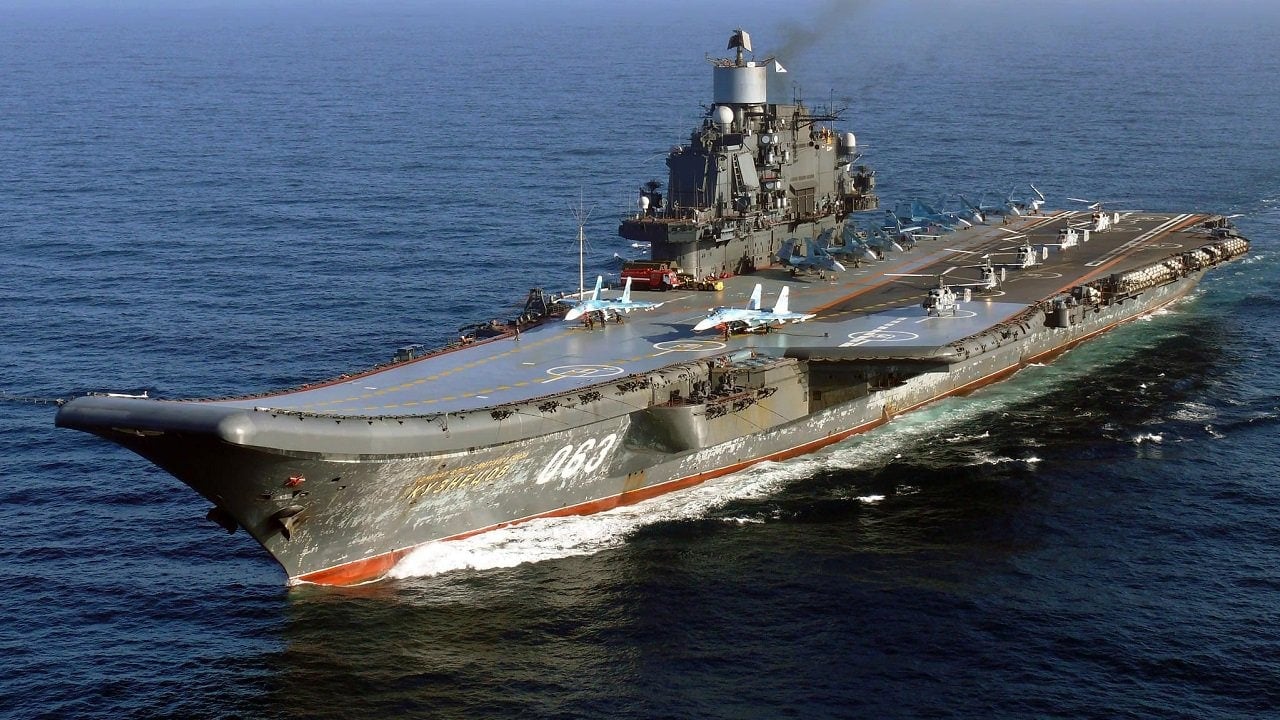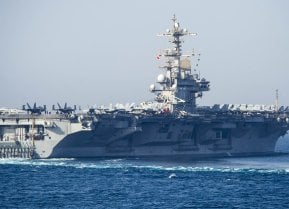Why Russia's Dream of a Nuclear Powered Aircraft Carrier Died
Russia’s track record regarding aircraft carriers is unfortunate, to put it mildly. Moscow could have built nuclear aircraft carriers.
Russia’s track record regarding aircraft carriers is unfortunate, to put it mildly.
In fact, most people associate the country’s single functioning carrier today with its plagued history of accidents, fires, and corruption.
Russia and Aircraft Carriers: A Sad History
The Admiral Kuznetsov has been undergoing a series of facelifts since 2017.
However, the timeline surrounding its reentry to service has been continuously delayed.
As the Russian Navy’s Flagship, the survival of the Kuznetsov is strategically critical for Moscow. Perhaps if the Kremlin had implemented the plans made for a nuclear aircraft carrier back in the 1980s, Russia would not need to rely on the tragic Kuznetsov solely.
Russia Wanted a Nuclear Powered Aircraft Carrier
When the Soviet Union’s Nevsky Engineering Bureau began developing the Kuznetsov back in the 1980s, it simultaneously began construction on the fourth-generation nuclear-powered heavy aircraft cruiser dubbed “Plan 1143.7.”
This project was based on an earlier Project 1153 OREL design. However, neither vessel ever made it to the water.
As designed, the Plan 1143.7 “Ulyanovsky” would have displaced roughly 94,000 tons and measured more than 1,000 feet in length. Four KN-3 nuclear reactors would have made up the ship’s propulsion system.
This setup typically comprises Russia’s Kirov-class battlecruisers, including the heavy-guided missile cruiser Frunze.

The Soviets planned the carrier to host around 3,400 sailors, which is roughly half of the total crew aboard a U.S. Nimitz-class carrier, but hefty when compared to its Soviet predecessors.
How did the Ulyanovsky Compare to the Kuznetsov?
In relation to the Kuznetsov, the Ulyanovsky would have made a more formidable “floating airport.”
The ship that never was would have allowed the Soviets to launch fully loaded airframes, a capability that the Kuznetsov does not possess.
The existing carrier is actually limited to launching less-loaded aircraft with its ski jump. The formidable planned ship could have carried a full array of platforms, including 44 fighter jets like the Sukhoi Su-33s, Su-27s and Mikoyan MiG-29Ks, six Yakovlev Yak-44 RLD Airborne early warning airframes, 16 Kamov Ka-27 Anti-submarine warfare helicopters and other variants. The Kuznetsov on the other hand can also carry 40 aircraft at a maximum.
In 1988, the Ulyanovsky’s keel was laid down at shipyard Nikolayev 444. Moscow initially planned to have the name “Kremlin,” which was later changed to honor Vladimir Lenin, whose birth name was Vladimir Ilyich Ulyanov. Once the Soviet Union collapsed, however, the ship’s funding and development were halted.

As Professor James R. Holmes, holder of the J.C. Wylie Chair of Maritime Strategy at the Naval War College, stated: “The Soviets weren’t dumb. They wouldn’t spend themselves into oblivion to keep up with the Joneses, and as a great land power, they had enormous claims on their resources to fund the army and air force. There was only so much to go around for ‘luxury fleet’ projects. Bottom line, if you can’t afford to keep the existing fleet at sea, where are you going to get the money to complete your first nuclear-powered supercarrier, a vessel that will demand even more manpower that you can’t afford?”
The Kuznetsov Remains Russia’s Sole Aircraft Carrier
Since the Ulyanovsky was ultimately nixed, the Russian Navy depends on its Kuznetsov carrier. This poor aircraft carrier has perhaps experienced every unfortunate mishap imaginable.
The Kuznetsov is notably powered by the highly thick, tarry substance called Mazut. This horrible black smoke fully engulfs the carrier, making it visible to ships miles away in the seas.
The Kuznetsov’s shoddy construction also amplifies the Mazut issue. Proper boiler and piping installations were critical additions to the Kuznetsov since Mazut is notoriously a challenging fuel source. However, insufficient piping throughout the ship has made it difficult for its boilers to function simultaneously.
As part of Russia’s Northern Fleet, the Kuznetsov has sailed in several deployments to the Mediterranean. When the ship sailed to Syria in 2017, an embarked MiG-29 crashed off the flight deck when it ran out of fuel while waiting for the crew to fix a faulty arresting wire.
Following this incident, the airframes meant to take off and land on the carrier were forced to do so on land, essentially rendering the Kuznetsov useless. Other issues have plagued the carrier since this deployment experience.
In 2018, a floating drydock supporting the ship sank and killed one soldier, in addition to causing a massive hole on its deck. The Kuznetsov was then relegated to the drydock to be fixed. While waiting to be maintained, a major fire broke out on the ship, killing four and injuring more than a dozen. A similar fire erupted onboard the carrier in early 2023.
Clearly, the Kuznetsov has not been a reliable carrier for the Russian Navy. Perhaps the Kremlin should have brought the Ulyanovsky to life. For now, the Kuznetsov remains in the shipyard.
Maya Carlin is an analyst with the Center for Security Policy and a former Anna Sobol Levy Fellow at IDC Herzliya in Israel. She has by-lines in many publications, including The National Interest, Jerusalem Post, and Times of Israel. You can follow her on Twitter: @MayaCarlin.


